




| Woodlouse Spider (Dysdera crocata (C. L. Koch, 1838)) |





|
|
Scientific name: Dysdera crocata (C. L. Koch, 1838) Common name: Woodlouse Spider French name: Dysdère armée Order: Araneae Family: Dysderidae Size: (Without chelicerae) 11-15 mm for females, 9-10 mm for males. Biotope: Forests, marshes, dunes, gardens, damp cellars. Web: No web to capture preys. Silken retreat in the litter or under stones used during the day. Observation period: All year. Geographic area: Originated from Europe, Dysdera crocata is now found in Asia, in North Africa, in South Africa, in North America and in Australia. |
Dysdera crocata shows dark red and shiny cephalothorax and legs. The chelicerae are particularly developed. Their size is at least half of the size of the cephalothorax. The strong basal parts are obliquely pointing forwards. They support thin fangs well suited to capture woodlice. Like other members of the Dysderidae family, Dysdera crocata has six eyes forming a small group. The abdomen is a uniform pale grey to pinkish brown colour. It shows two dimples near the front. Dysdera crocata shows from one to three small black spines on the upper side of femur IV, next to the base. Dysdera erythrina is missing these spines. This last species is also smaller and generally found far from human buildings. |
| [To know more about the Woodlouse Spider] [Next picture] [Top] |
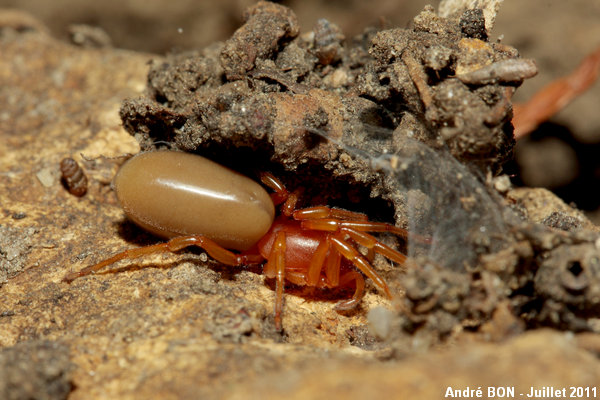
|
This Woodlouse Spider has been disturbed in its diurnal hide under one stone in my garden. No spine is visible on femur IV. The angle of view of the following pictures seems to permit to see these two spines. |
| [To know more about the Woodlouse Spider] [Next picture] [Previous picture] [Top] |
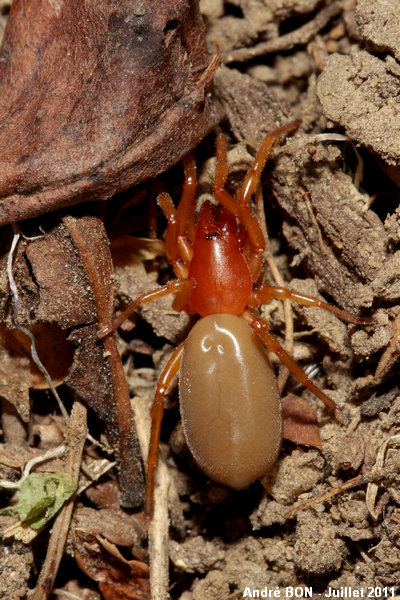
|
On this picture, the femur IV on the right is oriented in the axis of the view. You can see two small black spines above on the non-reduced picture. That's why I have identified this spider species as Dysdera crocata. |
| [To know more about the Woodlouse Spider] [Next picture] [Previous picture] [Top] |
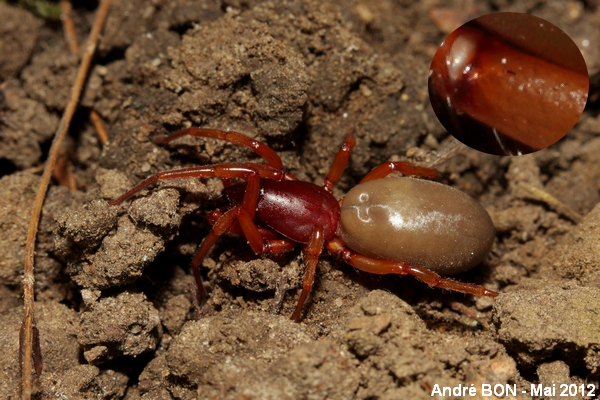
|
We can also see, on this picture, one small dark spine (my lack of knowledge about the specific vocabulary would rather make me speak of a small and short black hair) on the upper side of the base of femur IV. This observation done at the same place as the year before seems to confirm the Woodlouse Spider species. |
| [To know more about the Woodlouse Spider] [Next picture] [Previous picture] [Top] |
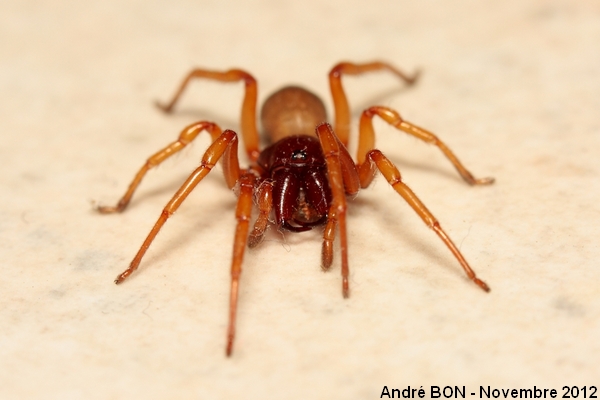
|
This Woodlouse spider came to visit the house and remove the dust. Another picture(not displayed here) shows the presence of a short spine on femur IV. |
| [To know more about the Woodlouse Spider] [Previous picture] [Top] |
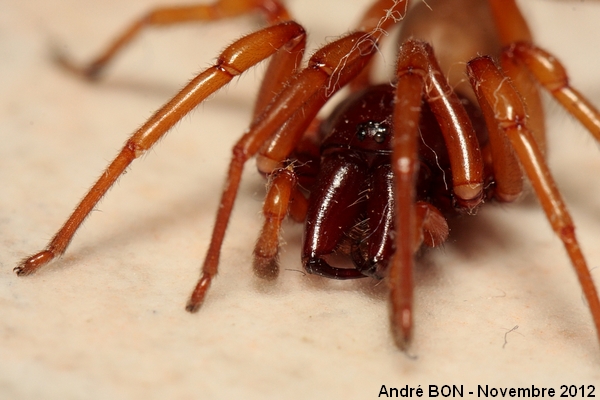
|
This close-up picture provides a better view of the well developped chelicerae and fangs which are suited to capture woodlice. |